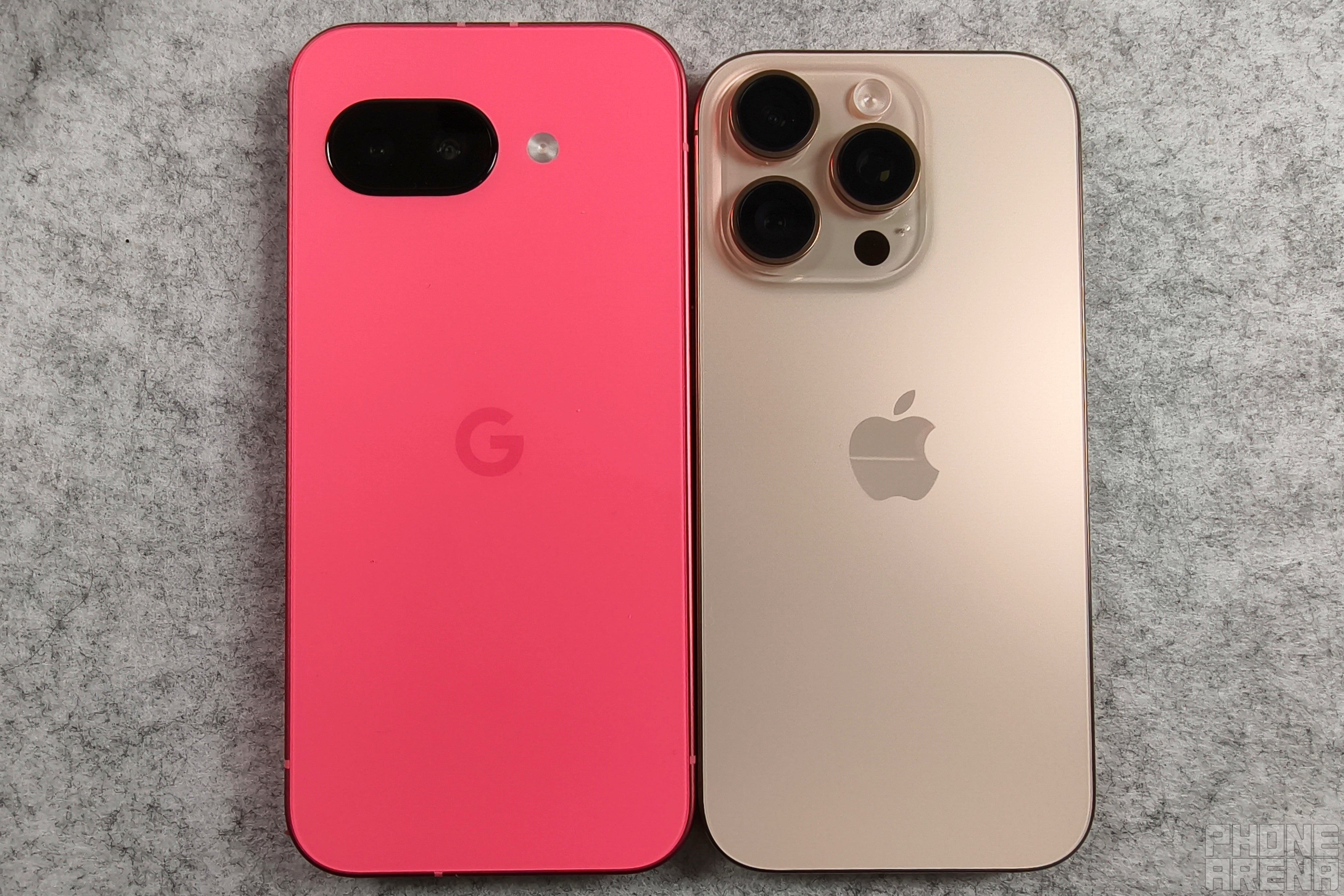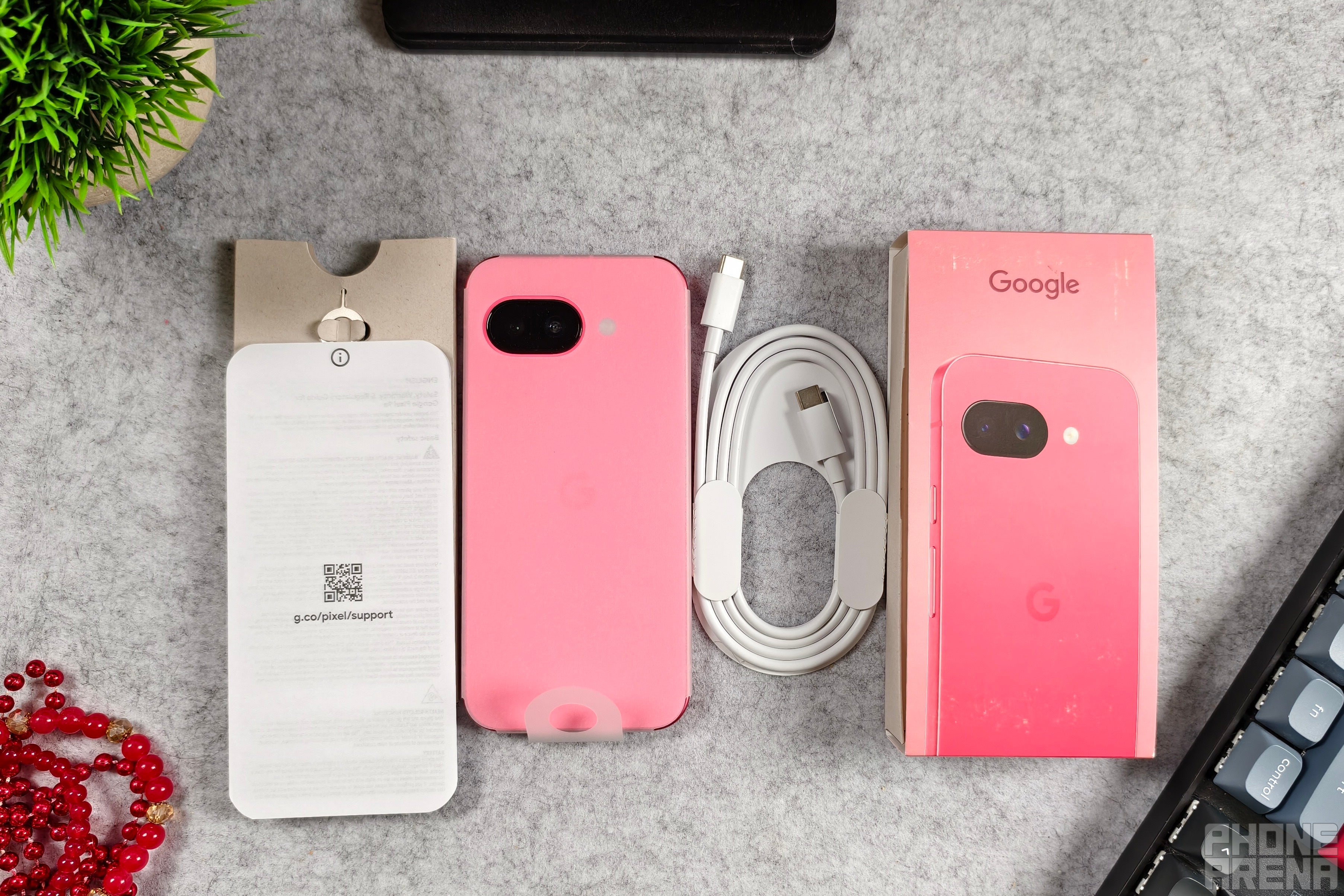Where it stands in the midrange crowd
At $499, the Pixel 9a undercuts most of its biggest rivals. Apple’s iPhone 16e, which launched earlier this year, starts at $599 and sticks with a familiar formula: a polished design and tight integration with iOS, but no fast refresh rate, limited AI features, and a smaller display.


The Google Pixel 9a’s size versus the iPhone 16 Pro. | Image credit — PhoneArena
When you look at the Pixel 9a’s full feature set, from its display and haptics to its cameras and AI tools, the $499 price tag feels like an intentional statement. It’s not just a midrange phone, it’s Google showing that advanced AI doesn’t need to be reserved for $1,000 flagships.
The Pixel 9a‘s new look. | Images credit — PhoneArena
What’s new vs last year’s Pixel 8a
Compared to the Pixel 8a, the 9a brings a number of notable changes — some upgrades, and one or two trade-offs. It still runs on 8GB of RAM and supports Gemini Nano, but now includes the newer Tensor G4 chip. It also inherits some of the best new software features introduced with the Pixel 9 and 9 Pro, like Add Me, Best Take, and Pixel Studio. One omission, however, is the Pixel Screenshots app, which is not available on the 9a.
The main camera lens has technically dropped from 64 MP to 48 MP, but it adds support for Macro Focus, which enables impressive close-up photography. You can now capture intricate textures and small details that simply weren’t possible on the 8a.
Sample photos from the Pixel 9a. | Images credit — PhoneArena
The Pixel 9a‘s flatter profile. | Images credit — PhoneArena
A better display, build, and battery
Google says the Pixel 9a has the brightest display ever on a Pixel A-series device, reaching a peak brightness of 2700 nits. The screen is also larger than the one on the 8a, going from 6.1 to 6.3 inches — matching the size of the Pixel 9 and Pixel 9 Pro. That added screen space is noticeable and welcome, especially with the larger bezels.
The Google Pixel 9a setup is easy-breezy. | Images credit — PhoneArena
Battery life is also an improvement, thanks to the Pixel 9a’s 5100 mAh battery — the largest ever on a Pixel phone. That’s a significant step up from the Pixel 8a’s 4492 mAh cell. You still get “fast” wired charging (Google’s word, not mine), and wireless charging via Qi, although neither will win speed awards.


What’s in the box of the Pixel 9a. | Image credit — PhoneArena
Gemini and AI tools shine
One of the standout features is the newly rolled out Gemini Live with camera and screen sharing. It’s surprisingly powerful and fluid in use — and yes, it’s available on the Pixel 9a, just like on the rest of the Pixel 9 lineup. Best of all, you don’t need a Gemini Advanced subscription to use it on this device.
Pixel 9a quick specs at a glance
- 6.3-inch Actua pOLED display, 1080 x 2424 resolution, 120Hz refresh rate
- Google Tensor G4 chip with Titan M2 security
- 8GB RAM, 128GB or 256GB storage
- 48 MP + 13 MP dual rear cameras, 13 MP ultrawide front camera
- 5100 mAh battery, with “fast” wired charging and Qi-certified wireless charging
- IP68 dust and water resistance, matte composite back with recycled materials
- Android 15 with 7 years of OS, security, and Pixel Drop updates
Final thoughts
After spending some time with the Pixel 9a, it’s clear this isn’t just a slight tweak on last year’s model. The Tensor G4 chip brings better AI performance and unlocks a set of features that genuinely change how the phone feels to use. The screen is bigger and brighter, the body more durable, and the battery finally sized to keep up with heavy days. The design change to a flat back might just be one of those things that you either love or hate, but it definitely doesn’t take away from the phone’s functionality.
At $499, the Pixel 9a feels like the definition of a smart buy — that is, unless you already own a Pixel 9 series device. It’s not flashy, but it’s thoughtful. And for those looking to hold onto a phone that gets better with time without a sticker-shock price, the Pixel 9a is an easy recommendation.
